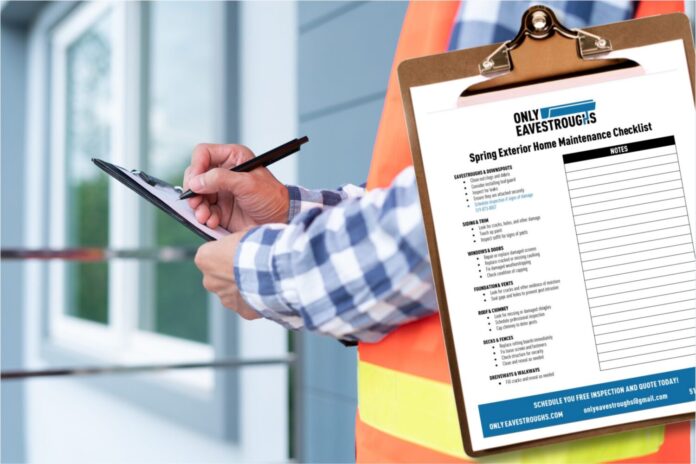Ah, the excitement of owning a new home! As you step into this milestone, a blend of jubilation and uncertainty may surface. How do you set up your new space without burning through your savings? Which tools do you need?
How can you strike a balance between budgeting and making your house truly feel like a home? Breathe easy, dear reader, because this comprehensive guide is tailored to address these pressing queries and more, paving the way for a seamless transition into your new dwelling.
Creating a Practical Budget for Homeownership
A home isn’t just a one-time expense. As you settle in, you’ll notice recurring costs that demand careful planning. Begin with a comprehensive list of your monthly expenses including the mortgage, utilities, maintenance, and any homeowner’s association fees.
Then, compare this against your monthly income. The aim isn’t to fret but to strategize. In this strategy, remember the golden rule: always overestimate expenses and underestimate income.
This conservative approach provides a cushion, enabling you to absorb any unforeseen costs. It’s also prudent to set aside an emergency fund, ideally three to six months’ worth of expenses, for unexpected repairs or changes in your financial situation.
Managing Initial Home Setup Costs

Moving into a blank space might spark the urge to fill it up instantly. Resist this impulse. Furnishing and decorating a home is a marathon, not a sprint. Begin by itemizing what you already own, then identify the Home essentials you lack.
Maybe it’s a dining table, a bed, or kitchen utensils. Your next step? Research. Browse online platforms, compare prices, and read reviews. While it might seem tedious, this exercise can save significant sums.
Remember, the goal isn’t just to find the cheapest option but to find value: items that strike a balance between cost, quality, and longevity.
Long-Term Financial Planning for Home Maintenance
Homes, like any possession, age with time. And age often brings along wear and tear. Therefore, it’s imperative to set aside a portion of your income, ideally 1-3% of your home’s purchase price annually, for routine upkeep and potential repairs.
This proactive approach mitigates the shock of unexpected expenses. Yet, it’s not just about money. Cultivate a habit of regular home inspections. At least once a year, evaluate the state of your roof, plumbing, heating, and other systems.
Early detection of issues often translates into cheaper and simpler solutions. An ounce of prevention, after all, is worth a pound of cure.
Energy Efficiency and Utility Cost Management

Utility bills can gnaw at your monthly budget if unchecked. Consider energy-efficient appliances; they might be pricier initially, but their operational costs are lower. LED lights, programmable thermostats, and energy-efficient windows can trim your bills considerably.
Insulation is another key player. Properly insulating your attic and walls can lead to remarkable savings. Sealing gaps around windows and doors prevent drafts, making your home cozier and more economical. Small changes, collectively, make a profound impact.
Home Security Measures on a Budget
Safety shouldn’t be a luxury. Thankfully, advances in technology have made home security more accessible than ever. Begin with the basics: solid door locks and window latches. From there, explore affordable security cameras and motion sensor lights for external areas.
With the proliferation of smart home gadgets, consider investing in a security system that notifies you directly on your smartphone of any potential breaches. While professional monitoring services can be costly, some DIY options are both effective and budget-friendly. Prioritize your peace of mind.
Navigating Home Insurance Options
Insurance can be a labyrinth. Start by understanding the difference between the market value of your home and its replacement cost. Ensure you’re insured for the latter, which covers rebuilding expenses.
Delve into the details, noting what’s covered, from natural disasters to theft. But don’t just settle for the first quote. Shop around. Seek multiple estimates and inquire about discounts.
Some companies offer reductions for security systems or bundling with car insurance. While cost matters, remember to choose a reputable provider. In times of crisis, you’ll want a company that stands steadfastly by your side.
Smart Shopping Strategies for Furnishing Your Home
Your dwelling deserves a personal touch. Yet, infusing character doesn’t mean splurging on designer labels. Embrace second-hand or thrift stores; they often house hidden treasures at a fraction of their original cost.
When shopping new, await seasonal sales or clearance events. Similarly, be wary of “too good to be true” deals.
Sometimes, a lower price means compromised quality. Strive for a harmonious marriage between aesthetic appeal, durability, and cost. After all, longevity in home furnishings translates into long-term savings.
Basic Home Maintenance Checklist and Schedule

Consistent maintenance keeps a house in its prime. Establish a bi-annual ritual: once in spring and once in autumn. Inspect the roofing, clean gutters, and check HVAC systems. Regularly replace furnace filters and smoke detector batteries.
Internal tasks matter too. Vacuum refrigerator coils, clean the oven, and ensure your water heater is running efficiently.
Document each activity, so over the years you’re not relying on memory but on a well-established routine. This systematic approach minimizes surprises and elongates your home’s lifespan.
Emergency Preparedness for Homeowners
While we all hope to never face severe emergencies, preparation is paramount. Construct an emergency kit stocked with essentials like water, non-perishable food, flashlights, and a first aid kit.
Stay informed about potential threats in your area, be it floods, fires, or other natural calamities. Develop an evacuation plan, ensuring all family members are on the same page.
Familiarize yourself with the safest areas in your home for various threats. Regularly revisit and update your plan, adapting to changing circumstances. Being prepared isn’t pessimistic; it’s prudent.
Final Thoughts

Owning a home is a thrilling voyage, filled with adventures and learnings. This guide serves as a compass, navigating you through initial setups, routine maintenance, and unexpected turns.
Embrace the journey, lean on this roadmap when in doubt, and create a sanctuary that is uniquely yours. Welcome to the wonderful world of homeownership.


![Calgary’s Hottest Neighborhoods for Luxury Homebuyers [2024]](https://thewashingtonote.com/wp-content/uploads/2024/04/Calgary-218x150.png)






